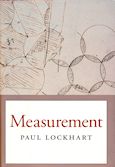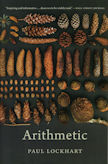For many years a 25 page essay written by Paul Lockhart has been circulating on the web. It came to prominence in 2008 when Keith Devlin featured it in his monthly column at MAA online. Devlin said there, and repeats in the foreword to this book:
[“K-12” means primary and secondary education in the US.]
I read the essay. It is a true lament, that is, a “passionate expression of grief”, of how an intrinsically beautiful subject has been so badly mistaught.
-
SIMPLICIO: But don’t you think that if math class were made more like art class
that a lot of kids just wouldn’t learn anything?
- SALVIATI: They’re not learning anything now! Better to not have math classes at all than to do what is currently being done. At least some people might have a chance to discover something beautiful on their own.
- SIMPLICIO: So you would remove mathematics from the school curriculum?
- SALVIATI: The mathematics has already been removed! The only question is what to do with the vapid, hollow shell that remains. Of course I would prefer to replace it with an active and joyful engagement with mathematical ideas.
- SALVIATI: They’re not learning anything now! Better to not have math classes at all than to do what is currently being done. At least some people might have a chance to discover something beautiful on their own.
It has been dulled down to mere regurgitation of formulae, with no understanding of the essential artistic process of discovery that leads to those formulae. Worse still, in geometry the discovery process that leads to elegant proofs has been replaced by a regurgitation, of ugly proofs.
Having learned that there was an extended book version, I immediately went and bought it. The book version has two parts. Part I, Lament, is the original essay. Part II, Exultation, is a constructive account of how mathematics might be taught to bring out the beauty, the artistry, of the subject.
I was one of the lucky ones who was good at maths at school. But I didn't become passionate about it until the age of about 14, when a new teacher arrived, who was passionate about the subject himself. I think he was the first teacher that I had ever had who was actually passionate about his subject. He loaned me a "popular maths" book, and from then on, I was riveted (very many thanks, Colin Chapman). That book gave me a first glimpse of the artistry and beauty behind the school formulas. I was also lucky enough to study the School Mathematics Project (SMP) curriculum, which emphasised understanding over regurgitation and meaningless manipulations (which some current curricula have still not incorporated, disappointingly). At the time we were exasperated by some of its heavy-handedness, but in retrospect, I realise that it was an excellent introduction to mathematical thinking. Even so, it was nothing like what Lockhart is advocating.
His critique is savage, passionate, devastating, thought-provoking. Read it.


